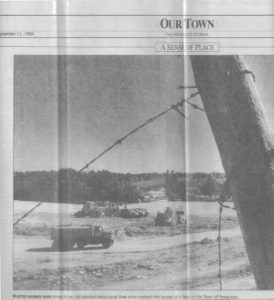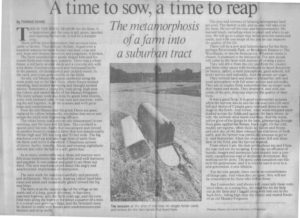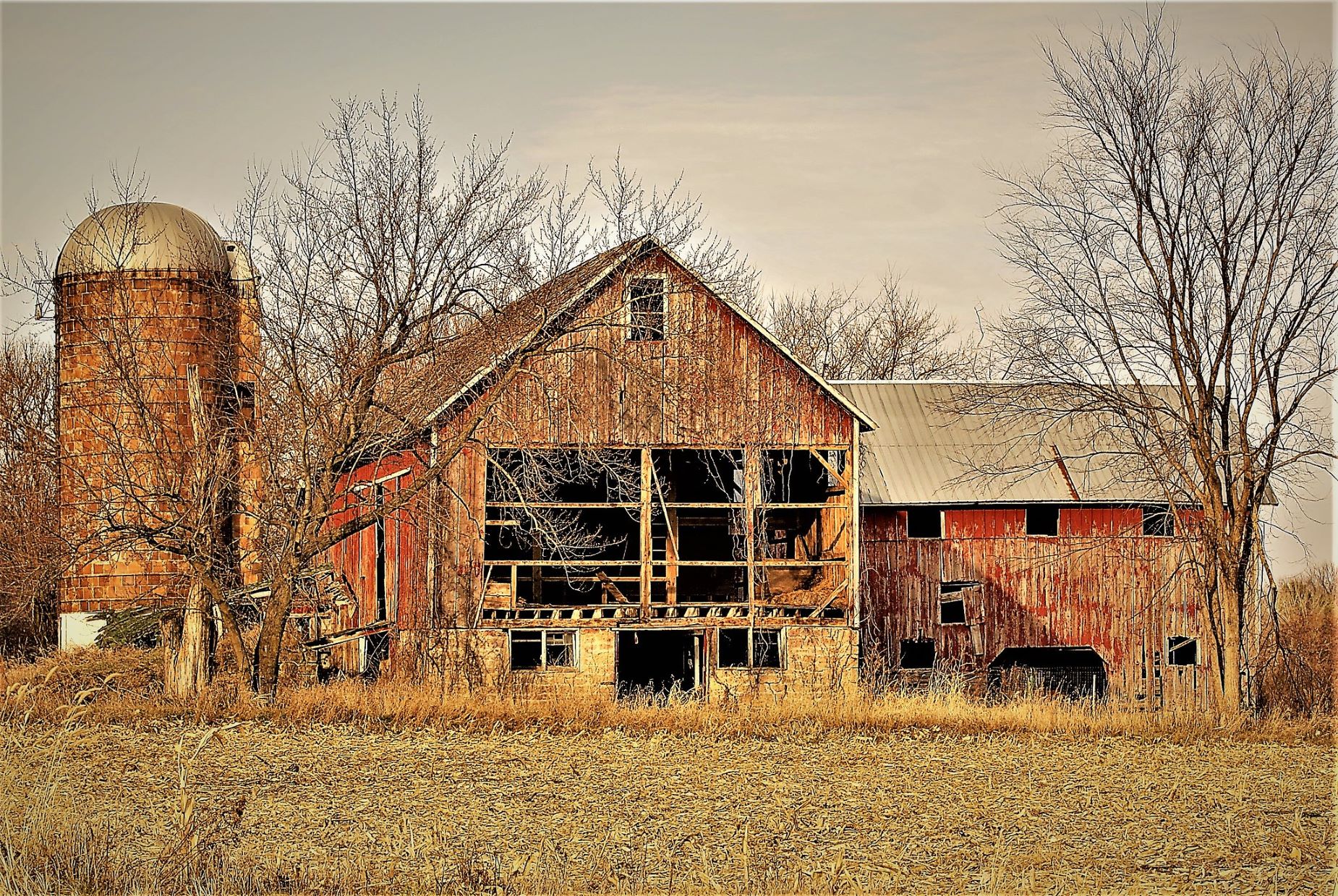Thomas Dunne published “The End of a Farm” in the Milwaukee Journal in 1994. After the piece, he reflects on the article 22 years later.
*
This is the final season for the farm. It is September and the corn is tall, green, tasseled and ripening for harvest. It will be a bumper crop.
There will be more Septembers, but no corn, cattle or farmer. That delicate rhythm, forged over a hundred seasons between farmer and land, crop and soil, hope and despair, intuition and judgment, is broken.

The farm extended over gently sloped hills and furrowed fieles and wide open pastures. There was a white house, a red barn, several sheds and a concrete silo with a tin dome. Guernseys roamed and ruminated lazily in the pasture, chickens darted and cackled noisily in the yard, and crops grew silently in the fields.
An old, red Massey-Ferguson cambered along the worn paths out to the back forty, where fences needed mending, land needed surveying and thought needed silence. Sometimes a young boy rode along, high atop the rickety and rusted fender of the Massey-Ferguson. The more serious work was done by green John Deeres, some with enclosed cabs. It was man and machine, working the soil together, in all seasons and with great hope and commitment.
Now the red Massey and the green Deere are gone, replaced by yellow behemoths, machines that move and scrape the earth with frightening efficacy.
The white house and concrete silo disappeared in one morning, and the barn will fall later. The cornfield is spared until harvest. Earth that was scraped and moved to another location created a berm that now stands nearly sixty feet high and three hundred feet long, and fifty feet wide. The big machines crawl up and take huge bites of earth from the berm and move it elsewhere. Ubiquitous sprouts of clover, barley, timothy, fescue and evening nightshade enliven and color the hill in a soft, green hue.
In so many unutterable ways, those old tractors were felicitous implements that worked the land with harmony and purpose. It was natural and good to see them out there. The new machines prowl about like angry and anachronistic implements of destruction.
The men work the machines carefully and precisely and deliberately. Men in suits, wearing yellow hard hats, stand and point and occasionally glance toward the big machines.
The farm is on the eastern edge of the village at the north end of a long, gravel driveway. A four-lane, east-west highway split the farm years ago, and the cornfield runs along the high way for about a quarter of al mile. It is a small and growing village and the farmland must be cleared to make new houses and condominiums and theaters and strip malls.

The joys and sorrows of farming intemperate land are over. The farmer is old, and no one will take over the farm. He served his time and his community. He learned much, including when to plant and when to uproot. He will go to a place that better suits his wants and needs, and with one swipe of the pen he can improve the quality of his life.
There will be a new and fulsome name for the farm: perhaps Riverwoods Park, or Brookpark Estates or The Woodlands, or maybe Sunnyacres. Whatever name is chosen, it promises to be distinctive. The new people will come to the farm with notions of owning a piece.
They will drive from the city and from the country and from other states with brochures in hand that promise beauty, safety, a rural atmosphere with full sewer service and sidewalks. They are in exodus from somewhere that on longer suits their wants and needs. They deserve it, and with one swipe of the pen, they can improve the quality of their lives.
It was a good farm. It is good to remember autumn when the harvest was in and the silo and corn crib were full and skeins of Canada geese swooped down to rummage in the fields. And winter, when wind-whipped snow slashed across the fields and against the barn where, inside, the animals were warm and busy. And the warm, yellow glow of the lamps in the barn, glimmering through thick glass against the frozen, black night. Or the cold, muddy springtime, when fields lay fallow and frozen and each day of the thaw released the redolence of fresh earth, and the farmer was terrifically anxious to get to it. And September, when the crops were full and abundant in the field, and the harvest loomed.
From where I am, the dust settles about me and I hear the roar and see the scraping. Every day an effusion of bucolic images and memories fades sharply into a constant, cacophonous roar of deliberate destruction. But nothing can be done. The good earth sustained one lifestyle for generations, and it is time to turn it over to a new generation, a new lifestyle.
For the new people, there can be no remembrance of things past. And when they are gone, they will not be remembered by hose who follow them.
But I remember, and always will, especially those summers when, as a young boy, my neighbor let me help out at the farm and I tagged along with him out to the back forty, riding high atop the rickety and rusted fender of an old Massey-Ferguson.
*
The farm in this story is a real farm. It was about one-half mile east of the farmhouse I grew up in. The owner of the farm was the superintendent of our school district (Pewaukee, WI) and I had heard from a teacher that he was looking for some summer help. I worked on the farm I was twelve or thirteen years old. He and his wife were very kind to me and fed me some delicious meals along with the best, coldest milk I’ve ever had. I helped mend fences, learned how to milk cows and performed many other light chores around the farm.
Like many farmers in our area, when it was time to retire he sold the land to developers, sometime in the late 1980s. The bulldozers came immediately and within a year everything was gone. I remember driving to work and seeing the bulldozers and earth-movers instead of the tractors and hay wagons. The recurring thought I had at the time was simply: implements of destruction. Writing this story helped release some of the anger and sadness that had gathered in my heart when the farm was destroyed.
![]()
Find out more about Thomas on our Contributors’ Page.
(Photo: Chumlee10/flickr.com/CC-BY SA 2.0)
- The End of a Farm by Thomas Dunne - August 11, 2022


